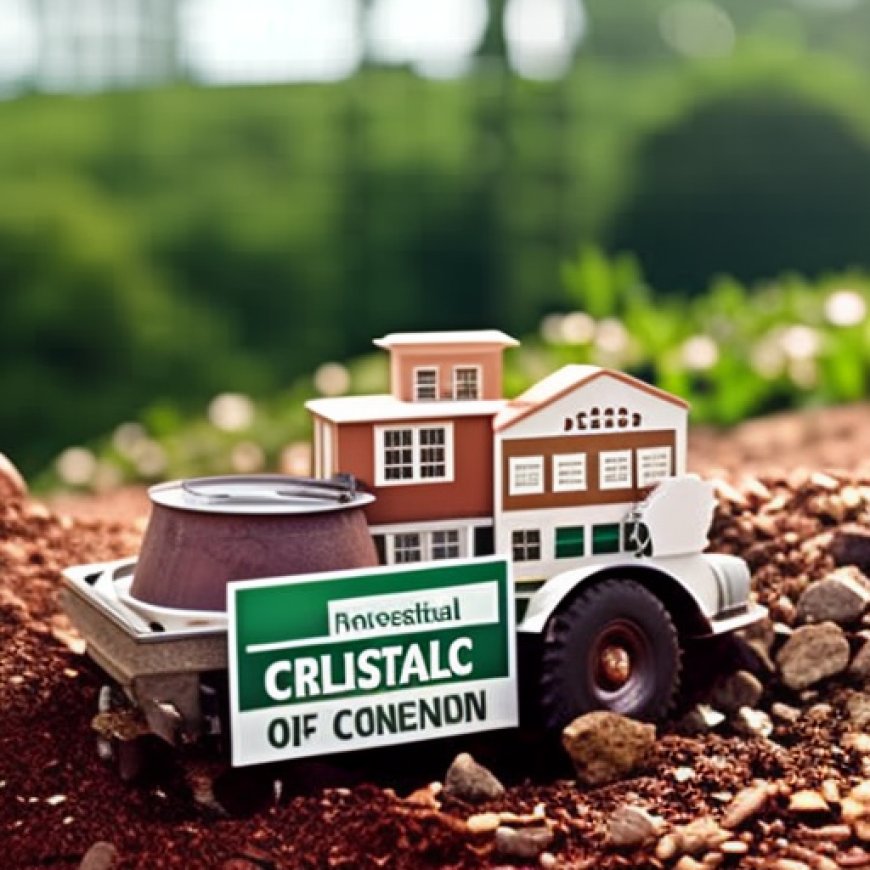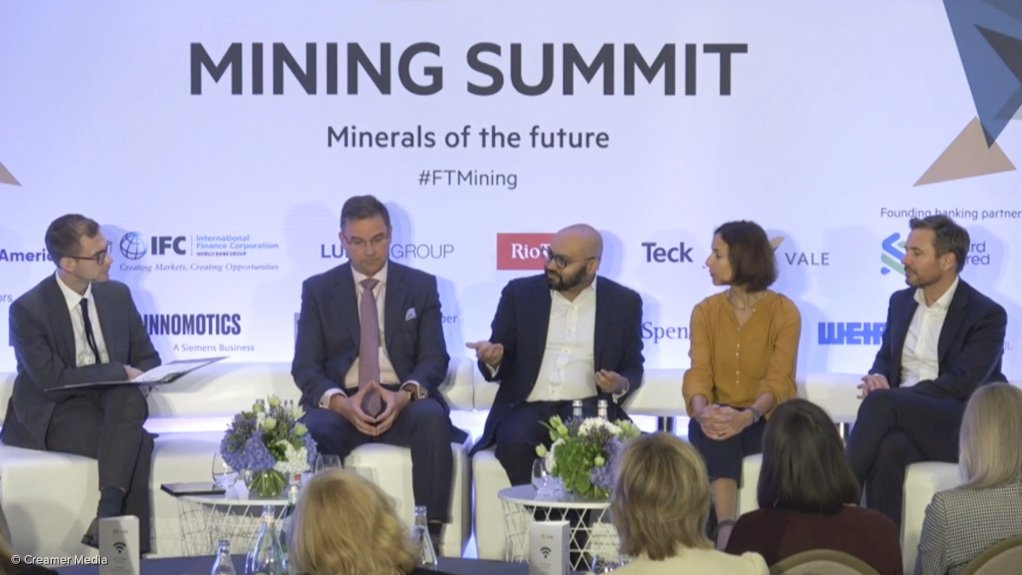Essential integration of mining with circular economy highlighted at FT Mining Summit
Essential integration of mining with circular economy highlighted at ... Creamer Media's Mining Weekly


Circular Economy in Mining: Towards Sustainable Development Goals

The concept of circularity is gaining traction in the mining industry, with many mine sites already implementing circular principles to reduce waste and conserve water. However, achieving full circularity for products, from production to consumption to reuse, requires collaboration between designers, policymakers, and industry stakeholders. This was emphasized at the FT Mining Summit, where experts discussed the importance of circular economy in the mining sector.
Importance of Circular Economy in Mining
The exponential rise in recycling and circular economy practices is driven by the increasing demand for critical minerals in the global energy transition. As the demand for these minerals continues to grow, miners are recognizing the need to focus on recycling operations and adopt circular principles.
Panel Discussion on Circular Economy in Mining
The panel discussion at the FT Mining Summit included industry experts such as Glencore global recycling head Kunal Sinha, Norsk Hydro executive VP corporate development Trond Olaf Christophersen, International Copper Association material stewardship global director Louise Assem, and Circular CEO Douglas Johnson-Poensgen. These experts highlighted the importance of responsible mining production and responsible consumption to bridge the gap between supply and demand for critical minerals.
Responsible Mining Production and Responsible Consumption
Kunal Sinha emphasized that responsible mining production is crucial to meet the growing demand for critical minerals. However, even with increased responsible production, there is still a gap between supply and demand. This gap can be addressed through responsible consumption, which involves adopting a circular economy approach. Sinha explained that the circular economy goes beyond recycling and includes product life extension, repair, and reuse. Recycling is the final step in the circular economy process.
Sinha also highlighted Glencore’s approach to circularity, which involves leveraging existing assets for recycling operations. The company has complex metallurgical assets that can blend primary and recycled feeds, enabling them to operate at a massive scale. Additionally, Glencore is repurposing some of its built assets, such as a lead refinery outside London, for electronics and battery recycling.
Circular Economy in Aluminium and Copper
Trond Olaf Christophersen discussed the circular economy in the aluminium industry, where a significant share of the total metal supply is already based on recycled material. Norsk Hydro expects the growth in the circular part of the market to outpace the growth in the primary side, driven by customer demand and regulations on sustainable supplies.
Louise Assem emphasized that mining plays a crucial role in the circular value chain, as without mining stocks, there would be no materials to recycle. She highlighted the need for both primary and secondary materials to meet the increasing demand for metals like copper. Regulatory drivers, such as legislation on the circular economy and sustainable products, are also pushing for a more circular approach in Europe and Asia.
Circular Economy in Battery Materials
Douglas Johnson-Poensgen discussed the importance of traceability in the battery value chain. By 2026, consumers will be able to compare the embodied carbon in batteries, driving the demand for recycled battery materials. Recycled battery materials have a lower energy requirement compared to primary materials, making them more sustainable.
Conclusion: Towards Sustainable Development Goals
The adoption of circular economy principles in the mining industry is crucial for achieving the Sustainable Development Goals (SDGs). By reducing waste, conserving resources, and promoting responsible production and consumption, the mining sector can contribute to sustainable development and mitigate climate change. Collaboration between stakeholders, including designers, policymakers, and industry players, is essential to fully realize the potential of circularity in mining.
SDGs, Targets, and Indicators in the Article
1. Which SDGs are addressed or connected to the issues highlighted in the article?
- SDG 12: Responsible Consumption and Production
- SDG 13: Climate Action
- SDG 15: Life on Land
The article discusses the importance of circularity and responsible consumption in achieving sustainability goals. It also mentions the need to reduce waste and mitigate climate change, which aligns with SDG 12 and SDG 13. Additionally, the article highlights the role of mining in the circular economy, which relates to SDG 15.
2. What specific targets under those SDGs can be identified based on the article’s content?
- SDG 12.2: By 2030, achieve the sustainable management and efficient use of natural resources.
- SDG 12.5: By 2030, substantially reduce waste generation through prevention, reduction, recycling, and reuse.
- SDG 13.2: Integrate climate change measures into national policies, strategies, and planning.
- SDG 15.3: By 2030, combat desertification, restore degraded land and soil, including land affected by desertification, drought, and floods.
The article emphasizes the need for sustainable management of natural resources (SDG 12.2) and reducing waste generation through recycling and reuse (SDG 12.5). It also highlights the importance of integrating climate change measures into policies and planning (SDG 13.2) and addressing land degradation (SDG 15.3).
3. Are there any indicators mentioned or implied in the article that can be used to measure progress towards the identified targets?
- Indicator 12.2.1: Material footprint, material footprint per capita, and material footprint per GDP
- Indicator 12.5.1: National recycling rate, tons of material recycled
- Indicator 13.2.1: Number of countries that have integrated climate change measures into policy frameworks
- Indicator 15.3.1: Proportion of land that is degraded over total land area
The article does not explicitly mention these indicators, but they can be used to measure progress towards the identified targets. These indicators help track the material footprint, recycling rates, integration of climate change measures, and land degradation.
Table: SDGs, Targets, and Indicators
| SDGs | Targets | Indicators |
|---|---|---|
| SDG 12: Responsible Consumption and Production | 12.2: By 2030, achieve the sustainable management and efficient use of natural resources. | Indicator 12.2.1: Material footprint, material footprint per capita, and material footprint per GDP |
| SDG 12: Responsible Consumption and Production | 12.5: By 2030, substantially reduce waste generation through prevention, reduction, recycling, and reuse. | Indicator 12.5.1: National recycling rate, tons of material recycled |
| SDG 13: Climate Action | Indicator 13.2.1: Number of countries that have integrated climate change measures into policy frameworks | |
| SDG 15: Life on Land | 15.3: By 2030, combat desertification, restore degraded land and soil, including land affected by desertification, drought, and floods. | Indicator 15.3.1: Proportion of land that is degraded over total land area |
Behold! This splendid article springs forth from the wellspring of knowledge, shaped by a wondrous proprietary AI technology that delved into a vast ocean of data, illuminating the path towards the Sustainable Development Goals. Remember that all rights are reserved by SDG Investors LLC, empowering us to champion progress together.
Source: miningweekly.com

Join us, as fellow seekers of change, on a transformative journey at https://sdgtalks.ai/welcome, where you can become a member and actively contribute to shaping a brighter future.







